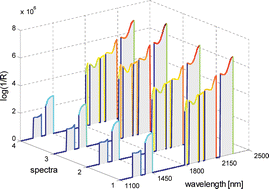Near-infrared reflectance spectroscopy and multivariate calibration techniques applied to modelling the crude protein, fibre and fat content in rapeseed meal
Abstract

* Corresponding authors
a
Department of Chemometrics, Institute of Chemistry, Silesian University, 9 Szkolna Street, Katowice, Poland
E-mail:
beata@us.edu.pl
Fax: +48 32 2599978
Tel: +48 32 3592115
b Department of Clinical Pharmacology, Faculty of Pharmacy, Wrocław Medical University, 44 Bujwida Street, Wrocław, Poland

 Please wait while we load your content...
Something went wrong. Try again?
Please wait while we load your content...
Something went wrong. Try again?
M. Daszykowski, M. S. Wrobel, H. Czarnik-Matusewicz and B. Walczak, Analyst, 2008, 133, 1523 DOI: 10.1039/B803687J
To request permission to reproduce material from this article, please go to the Copyright Clearance Center request page.
If you are an author contributing to an RSC publication, you do not need to request permission provided correct acknowledgement is given.
If you are the author of this article, you do not need to request permission to reproduce figures and diagrams provided correct acknowledgement is given. If you want to reproduce the whole article in a third-party publication (excluding your thesis/dissertation for which permission is not required) please go to the Copyright Clearance Center request page.
Read more about how to correctly acknowledge RSC content.
 Fetching data from CrossRef.
Fetching data from CrossRef.
This may take some time to load.
Loading related content
